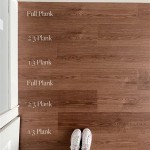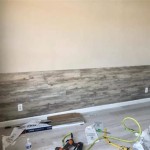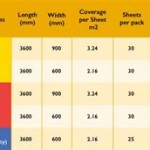What to Put Under Vinyl Flooring: A Comprehensive Guide to Subfloor Preparation
When installing vinyl flooring, proper subfloor preparation is crucial to ensure a durable and long-lasting installation. The type of underlayment or subflooring you choose depends on the specific type of vinyl flooring, the existing subfloor, and the desired performance characteristics.
Types of Underlayment for Vinyl Flooring
- Luxury Vinyl Tile (LVT) and Vinyl Plank (VPT): Require an underlayment that provides moisture protection, sound absorption, and thermal insulation. Common options include cork, foam, and rubber underlayment.
- Sheet Vinyl: Typically installed directly over a smooth, level subfloor without additional underlayment. However, a thin foam underlayment can enhance comfort underfoot.
Types of Subflooring for Vinyl Flooring
- Concrete: Requires a smooth, level surface with no cracks or imperfections. A self-leveling compound or cement underlayment may be necessary to prepare the surface for vinyl flooring.
- Plywood: Must be at least 3/4 inch thick and securely fastened to the floor joists. Joints should be staggered and any gaps filled with a wood filler.
- Oriented Strand Board (OSB): Similar to plywood, but typically less expensive. Requires a smooth surface and may benefit from an additional underlayment layer.
Factors to Consider When Choosing a Subfloor or Underlayment
- Moisture Protection: Vinyl flooring is moisture-resistant but not waterproof. An underlayment with moisture barrier properties can prevent water damage to the subfloor.
- Sound Absorption: Acoustic underlayment reduces noise transmission, providing comfort and privacy in areas with high foot traffic.
- Thermal Insulation: Underlayment with thermal insulation properties can increase floor temperature and reduce energy consumption in colder climates.
- Cost: Underlayment and subflooring materials vary in cost. Consider the budget and the desired performance characteristics when making your selection.
Installation Recommendations
For proper installation of vinyl flooring over underlayment or subflooring:
- Ensure the subfloor is smooth, level, and free from debris.
- Roll out the underlayment or subflooring perpendicular to the direction of the vinyl planks or tiles.
- Tape or glue the seams of the underlayment or subflooring to prevent movement.
- Allow any adhesives or underlayment to dry completely before installing the vinyl flooring.
Conclusion
Proper subfloor preparation is essential for a successful vinyl flooring installation. By selecting the appropriate underlayment or subflooring based on the specific flooring type and subfloor condition, you can ensure a durable, comfortable, and long-lasting floor that meets your needs and expectations.

Underlayment For Vinyl Floors 2 Big Questions Answered Pliteq Ap

Do You Need Underlayment For Vinyl Plank Flooring

What Do You Put Under Vinyl Flooring

Whole Underlayment For Vinyl Flooring Pvc Floor Wholer

Underlayment For Vinyl Flooring The Only Guide You Need Floor City

Vinyl Flooring Does It Need Underlayment Word Of Mouth Floors

Underlayment Buyer S Guide

Underlay For Vinyl Do You Actually Need It We Have Answers

How To Install Vinyl Plank Flooring As A Beginner Home Renovation

Rigid Insulation Under Vinyl Flooring Good Idea Or Bad Phoenix Pros
See Also







